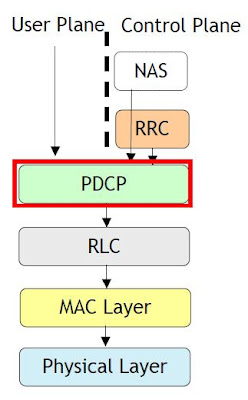Packet Data Convergence Protocol (PDCP) in LTE
What is pdcp in lte: –
PDCP means Packet Data Convergence Protocol means it convert data at protocol level let’s check its function at user plane and control plane in details.
The main services provided by the Packet Data Convergence Protocol (PDCP) are:
- IP header compression and decompression with the Robust Header Compression (ROHC) method only.
- Ciphering
- Transfer of user data
- In-sequence delivery of upper layer PDUs at HO in the uplink
- Ciphering and Integrity Protection to secure the transmission of core network signaling

There is more function of PDCP in LTE is as below
PDCP in LTE for sublayer of user plane function:
- For Handover RLC AM Retransmission of PDCP SDUs
- For ROHC – Header compression and decompression
- user data Transfer
- In PDCP re-establishment procedure for RLC AM for In-sequence delivery on upper layer PDUs.
- PDCP re-establishment procedure for RLC AM for duplicate detection of lower layer SDUs
- PDCP in LTE use for ciphering and deciphering
- In uplink SDU discard based on timer.
PDCP in LTE for the control plane Function:-
- PDCP in LTE use Integrity Protection and Ciphering.
- Data Transfer of control plane.
The header of an IP packet is 20 octets.

For example, during an FTP transfer, a lot of IP packets are sent over the air interface and the IP headers are almost always the same.
They represent a significant amount of data which can be reduced thanks to a compression method.
The PDCP header is 1 (or 2) octet. The Robust Header Compression (ROHC) is a standardized method used to compress IP, UDP, TCP and RTP headers.
PDCP operates above the Radio Link Control (RLC) layer and provides several crucial functions, including header compression to reduce overhead, integrity protection to safeguard data integrity, and encryption to protect user data confidentiality. PDCP plays a pivotal role in optimizing the utilization of radio resources, enhancing the overall performance of LTE networks, and ensuring that data is transmitted reliably and securely between the user equipment (UE) and the evolved NodeB (eNodeB). Its functionality is instrumental in delivering the high-quality data services and seamless connectivity that LTE networks are known for.